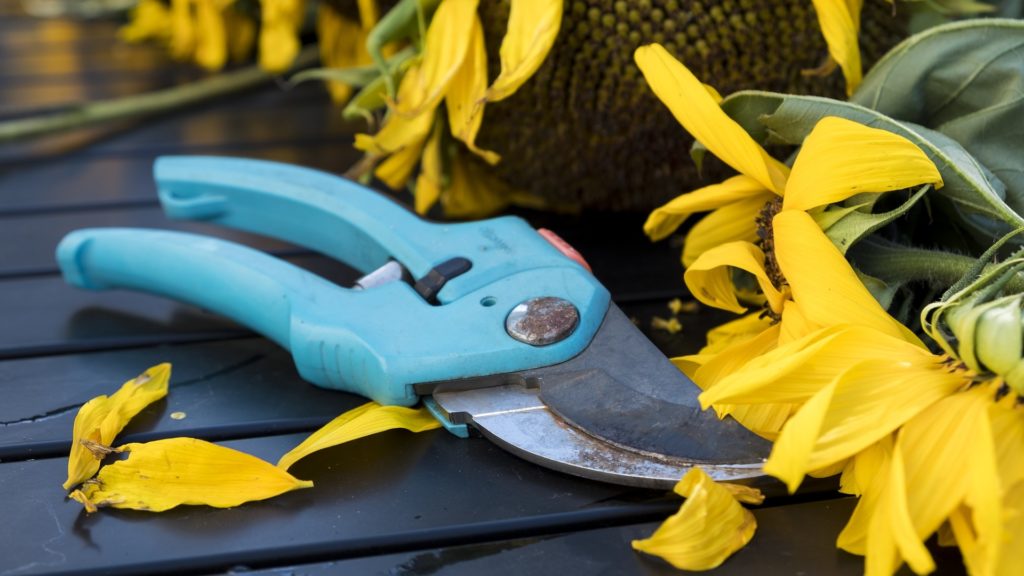
01
What are the Benefits of Outdoor Care Pruning?
02
Pruning Outdoor Plants 101
03
Tips for Successful Shrub Pruning
04
Pruning Outdoor Tomatoes
05
How to Prune Herbs
06
How & When to Prune Trees
First-time plant pruners may be hesitant to cut away at their healthy plants, but trust us, it’s definitely advantageous. Frequent pruning helps our plants to thrive by cutting away the unnecessary stuff and letting the plant focus on new growth. By practicing proper pruning techniques, we’ll see a marked difference in the appearance, health and crop yield of our plants. This guide sorts out the proper way to prune each one of our plants.
What are the Benefits of Outdoor Care Pruning?
There are loads of reasons why we should be pruning our plants. For starters, young plants can be molded into the ideal size and shape early on, so when they reach maturity they’ll be well filled-out and won’t have any wonky parts that stick out. In mature plants, some regular pruning helps to maintain plant health and overall appearance. Plus, we’re much less likely to get poked in the eye if we trim down any branches that jut out too far. Deadheading is also a common pruning technique that keeps our plants rot-free and looking healthy. Keeping old withered flowers and dying leaves on our plants won’t do them any favors, so nip those bad boys off before they start getting gnarly. This should leave room for plenty of new growth.

Pruning Outdoor Plants 101
Not all plants are pruned the same way, so we don’t want to jump right in and absent-mindedly chop away at leaves and branches. We’ll also want to make sure you have the right tools for the job. Thick branches and stems require a sturdy pair of well-sharpened gardening shears. For skinnier stems and flowers, just a simple pair of sharp scissors should do the trick. Between uses, give pruning tool blades a quick wipe down with isopropyl alcohol. This will kill bacteria and help prevent spreading germs and diseases that could make our plants sick.
Tips for Successful Shrub Pruning
Big flowering bushes like lilacs, roses, and rhododendrons can start looking pretty shaggy and unkempt if we don’t prune them. Trim out the bits that stick out and start with the lower branches first. This way, we won’t end up tripping over any long ground-level branches while we’re trying to reach the ones that are closer to the top. Remove any of the spent flowers and branches by cutting into the live branches at an angle.

Pruning Outdoor Tomatoes
To make sure our tomato plants grow to their fullest potential, there’s a special pruning technique you’ll definitely want to adopt. Tomato plants develop “suckers” – little shoots that sprout out from the plant – usually from the apex where a branch extends from the stem. If we don’t pick out the suckers, they’ll actually drain out nutrients from our tomato plants and begin to grow into separate, tiny, and less impressive plants. Tomato plants can grow a lot of suckers, so nip them off until there’s around three or four left. Suckers that are lower on the plant and closer to the soil are the most important to remove because they hoard the most nutrients. Lots of tomato gardeners opt for the “Missouri” method: only prune the shoots that stretch past the leaves that are closest to the main stem. This should keep enough extra foliage on our tomato plants so that their photosynthesis process won’t be disrupted.

How to Prune Herbs
Pruning our herb gardens makes a huge difference in the quality of our herbs, whether we keep our plants indoors or outdoors. Trim the dead leaves, branches, and blossoms off the tops of tender herbs like basil. Cut them at the apex of the leaf and stem, right where the two stalks meet. Herbs like rosemary and lavender have thicker, woodier stems. Trim them from the green part of the stem an inch above the “wood” to promote new growth. Don’t go too overboard with pruning herbs – we should never take out more than ⅓ of the plant’s growth.
How & When to Prune Trees
When it comes to pruning fruit trees, like apple and cherry, we’ll want to remove the 3 D’s – dead, damaged and diseased branches. They tend to sprout suckers too, so pick off the ones that protrude from the base of the tree by its roots. The overall goal for pruning fruit trees is allowing air circulation and adequate sunlight throughout the canopy of foliage, so try to thin out the branches until each one has around 6-12 inches of space between its surrounding branches. Focus on the most crowded branches and nick those ones off first. We should try to the best of our abilities to maintain even spacing throughout the tree. Also, cut back any branches that awkwardly protrude from the rest. When we trim those higher-up branches, it allows for more sunlight to reach the lower areas so our trees will have even growth that isn’t too top-heavy. It also makes it easier to grab any fruit when harvest time rolls around!
For a truly successful garden, pruning is an absolute must. These tips should be a good starting point to get into the groove of pruning regularly, but once we’ve mastered the basics, we can begin to get strategic with our pruning routines. Depending on what our priorities are for our gardens, whether it’s optimizing crop yield or aesthetics, some crafty pruning can go a long way. For more advanced pruning techniques, skip the guesswork and visit one of our garden centers, where one of our associates will gladly point you in the right direction.
